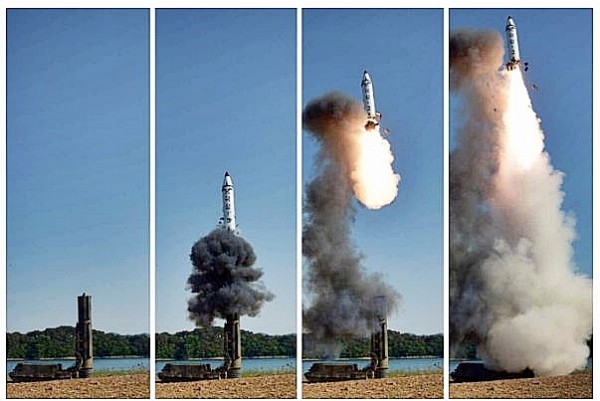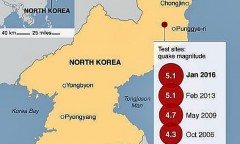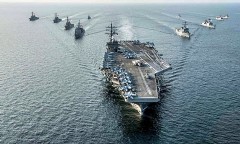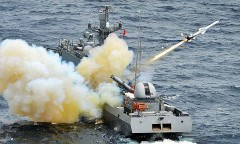By Arthur Dominic J. Villasanta , | May 25, 2017

Launch of a North Korean Pukguksong-2 MRBM on May 21.
North Korean propaganda is playing-up its new but barely tested Pukguksong-2 medium-range ballistic missile (MRBM) capable of lofting a nuclear warhead as its best missile yet, and indications seem to indicate this might be true.
Pukguksong-2 was flight tested for only the second time on May 21, and the claimed success of this test prompted North Korean leader Kim Jong-un to approve deployment of the missile. Western experts are raising eyebrows at the haste to declare the missile operational after only two launches, the first of which occurred only last February.
Like Us on Facebook
The propaganda implications are clear, however, since the rapid deployment of the road mobile missile becomes a source of major concern for South Korea and the United States.
"Another fruitful test launch of the surface-to-surface medium-range ballistic missile Pukguksong-2 has been carried out," reported the state-run Korean Central News Agency (KCNA).
Pukguksong-2 is apparently North Korea's most successful solid-fuel missile. It is this fact that makes the missile a potent threat.
A solid-fuel missile can be launched within minutes compared to the 30 minutes to an hour required by a liquid-fuel missile.
When deployed, Pukguksong-2 will likely be difficult to detect prior signs of an attack because of its mobility and its capability to quick launch in only a few minutes.
Also worrisome is the seeming accuracy of the warhead installed on the second missile.
Photos taken by a camera installed on the missile's warhead confirms the warhead descended at the proper angle during the atmospheric reentry phase, an indication of increased accuracy.
"The accuracy of the attitude control system has been even more clearly confirmed by images taken with a camera installed in the warhead," said KCNA.
Western analysts described the new missile as more stable, more efficient, and harder to detect than North Korea's previous liquid-fuelled missiles.
On the other hand, liquid-fueled rockets take hours to prepare for launch and are easier to detect by other countries. The Joint Chiefs of Staff of the Republic of Korea was counting on this failing by North Korea's liquid-fueled rockets to give it enough warning to launch an immediate counterattack.
The advent of Pukguksong-2 removes this advanced warning. An MRBM has a maximum range of between 1,000 km and 3,000 km.
-
Use of Coronavirus Pandemic Drones Raises Privacy Concerns: Drones Spread Fear, Local Officials Say

-
Coronavirus Hampers The Delivery Of Lockheed Martin F-35 Stealth Fighters For 2020

-
Instagram Speeds Up Plans to Add Account Memorialization Feature Due to COVID-19 Deaths

-
NASA: Perseverance Plans to Bring 'Mars Rock' to Earth in 2031

-
600 Dead And 3,000 In The Hospital as Iranians Believed Drinking High-Concentrations of Alcohol Can Cure The Coronavirus

-
600 Dead And 3,000 In The Hospital as Iranians Believed Drinking High-Concentrations of Alcohol Can Cure The Coronavirus

-
COVID-19: Doctors, Nurses Use Virtual Reality to Learn New Skills in Treating Coronavirus Patients










